Accepted Scientific Name: Drimia maritima (L.) Stearn
Ann. Mus. Goulandris 4: 204 (1978)
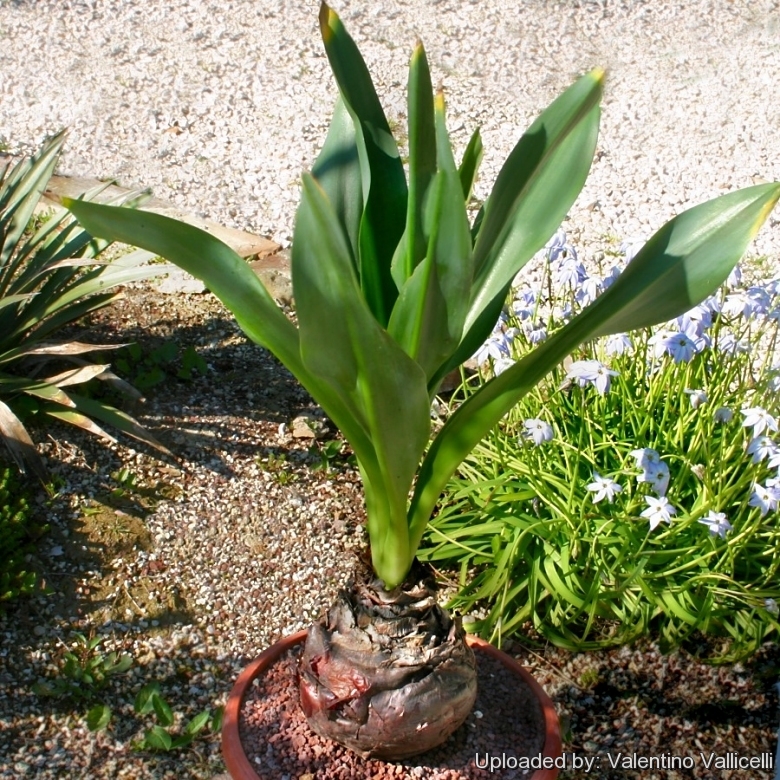
Urginea maritima (Drimia maritima) Photo by: Valentino Vallicelli
It is an unmistakable species for it shape and aspect. In the late summer for the high and characteristic inflorescence, in the other seasons for the above-ground bulbs and leaves.
Origin and Habitat: Native to the Mediterranean coastal regions
Habitat: It is found in open spaces in sandy or gravely soil and on limestone cliffs, often under very harsh conditions, with the bulbs totally above the ground. It grows close to the sea or by far more commonly inland than on the sea, at an elevation range of 0-600 meters. The bulb resist to the occasional fires common in the Mediterranean area, and fires don't harm them at all.
Synonyms:
See all synonyms of Drimia maritima
back
Accepted name in llifle Database:Drimia maritima (L.) StearnAnn. Mus. Goulandris 4: 204 (1978)Synonymy: 39
back
Common Names include:
ENGLISH: Crusader Spear, Sea Squill, White Squill, Red Squill
ARABIC ( لعربية ): عنصل بحري
BASQUE (Euskara): Bassaquipula, Basa-kipula, Astatipula, Astakipula, Asta-tipula
CATALAN (Català): Ceba marina, Ceba d´ase, Ceba d’ase, Scilla, Cilla, Escilla blanca, Escilla, Cebolla, Cebes marines, Ceba rotja, Ceba roja, Ceba porrina, Ceba porrera, Ceba porrassa
CHINESE (中文): 海葱
ESTONIAN (Eesti): Meriurgiinea
FINNISH (Suomi): Merisipuli
FRENCH (Français): Scille officinale, Scille maritime
GERMAN (Deutsch): Weiße Meerzwiebel, Meerzwiebel
GREEK (Ελληνικά): Αγιοβασιλίτσα
HEBREW (עברית): חצב מצוי, חצב
HUNGARIAN (Magyar): Tengerihagyma
IDO: Squilo
ITALIAN (Italiano): Cipolla marina, Scilla marittima
LATIN (Latina): Scilla
MAJORCAN: Ceba marina, Seba marina, Cebolla
POLISH ( Polski): Urginia morska
PORTUGUESE (Português): Cebola-do-mar, Cebola-albarrã, Alvarrâ-branca, Alvarraâ marítima, Alvarraâ branca, Albarrâ-ordinária, Albarraâ marítima, Albarraâ, Scilla, Esquilla, Cila-marítima, Cila, Cebola-marinha, Cebola de rae, Cebola alvarrâ, Cebola albarraâ, Cebola albarrâ, Albarrâ-ordinária
RUSSIAN (Русский): Урги́нея примо́рская, Морско́й лук
SLOVENIAN (Slovenščina): Primorska čebula
SPANISH (Español): Esquila, Escila, Albarrana, Cebolla albarrana, Yerba de sabañones, Varita de San José, Caña, Bola, Biniño, Almorrana, Alhonsol, Tarabitán, Pancracio, Jabonera liria, Gamonera, Flor de perro, Farolillos, Chirle, Ceborrincha, Ceborrancho, Ceborrancha, Cebollina, Cebolletas almorraneras, Cebolleta loca, Cebolleta, Cebollas almorraneras, Cebolla albarrana, Cebolla albarrama
SWEDISH (Svenska): Sjölök
TURKISH (Türkçe): Ada soğanı
UPPER SORBIAN (Hornjoserbsce): Mórska česnička
VALENCIAN (Valencià): Ceba marina, Seba porrera, Seba porrina, Seba marina, Ceba porrina, Ceba porrera
WALLOON (walon): Agnon-d'-leu
Description: It is the giant among all Mediterranean geophytes it is a winter active perennial bulb. The plant is not fragrant even in the flowers..
Bulb: Pyriform with several layers of papery tunics that protect the bulbs from the sun. The bulbs split dichotomously from the apex rather than forming basal offsets and in time they grow to massive clumps up to 20 heads, each one from 12 to 20cm in diameter and weigh 2 to 3,5 kg. The form with brown reddish outer tunics, is sometime referred as var. rubra and gets to be a bigger size. The other form has whitish outer tunics and is referred as var. alba. The big bulbs can last for dozen of years.
Leaves: Broadly sword-shaped, erect, coriaceous, slightly succulent, dark green with a bluish waxy bloom that can get up to 35cm long by 10cm wide. The leaf canopy will reach about 60-90cm tall by 60-90cm across. They are basal and emerge in autumn and last till in spring.
Flower: The inflorescence (a long spike) will shoot up in August or September while the plant is leafless. There is only one inflorescence, not branched for bulb, it can reach 1-1,8 meters tall and is covered with con 50-100, small, star-shaped, white flowers each 1 to 1.5 cm across in the upper one-half. (but some individuals have white flowers with a distinct pink midrib on the tepals and in extreme cases the flowers are all pinkish)
Roots: The root system is extensive. The roots are few and quite succulent.
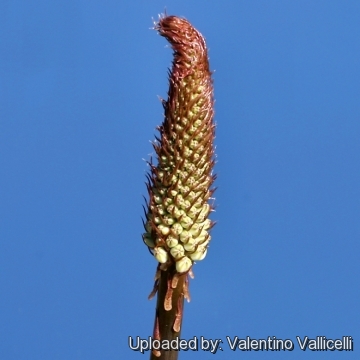 Urginea maritima (Drimia maritima) Photo by: Valentino Vallicelli
Urginea maritima (Drimia maritima) Photo by: Valentino Vallicelli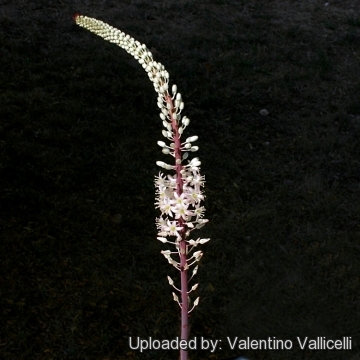 Urginea maritima (Drimia maritima) Photo by: Valentino Vallicelli
Urginea maritima (Drimia maritima) Photo by: Valentino Vallicelli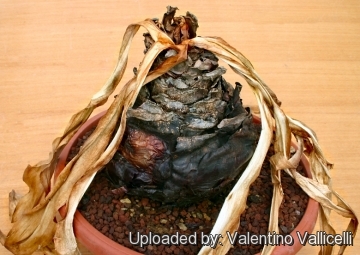 Urginea maritima (Drimia maritima) Photo by: Valentino Vallicelli
Urginea maritima (Drimia maritima) Photo by: Valentino Vallicelli Urginea maritima (Drimia maritima) Photo by: Valentino Vallicelli
Urginea maritima (Drimia maritima) Photo by: Valentino Vallicelli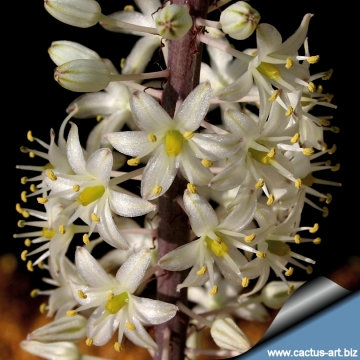 Urginea maritima (Drimia maritima) Photo by: Cactus Art
Urginea maritima (Drimia maritima) Photo by: Cactus Art Urginea maritima (Drimia maritima) Photo by: Cactus Art
Urginea maritima (Drimia maritima) Photo by: Cactus Art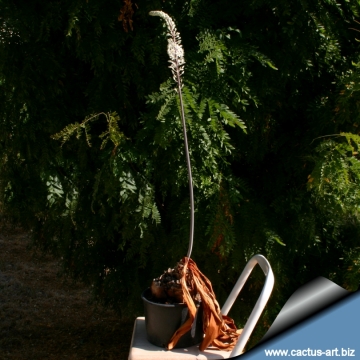 Urginea maritima (Drimia maritima) Photo by: Cactus Art
Urginea maritima (Drimia maritima) Photo by: Cactus Art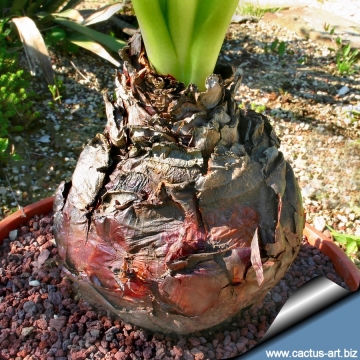 Urginea maritima (Drimia maritima) Photo by: Cactus Art
Urginea maritima (Drimia maritima) Photo by: Cactus ArtCultivation and Propagation: Easy to grown in a dry and sunny position or under a deciduous tree so the plants will receive winter sun, it can be grown in the ground (in warm climate) or in a decorative pot. The bulbs are winter active and summer dormant, so they should be given supplemental water in the winter, but none in the summer. The bulbs can be planted lifted to expose the top one half. When planting in the ground allow ample room for the bulbs to divide and multiply. Plant in a porous soil with good drainage.
The foliage is hardy to at least 3° C, while the bulb itself can tolerate lower temperatures.
Urginea maritimaSN|18245]]SN|18245]] can be grown in a cactus and succulent garden. It can be placed in a decorative pot and used as a winter focal point on a patio. Delicate flowers bloom in summer and the tall stalks dot the landscape creating a beautiful sight. This species has the same growing cycle of many winter rainfall South African species likeAmaryllis orBrunsvigia, but foliage resembles the foliage of Mexican Agaves.
Uses: Poisonous plant. Rodents don't eat the bulbs since they are poisonous. Repellent and anti-parasitic agent for insect and mice. The farmers put the whole plant in granaries and silos.
Your Photos

by Cactus Art
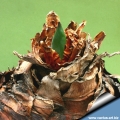
by Cactus Art
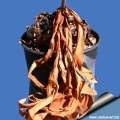
by Cactus Art






















